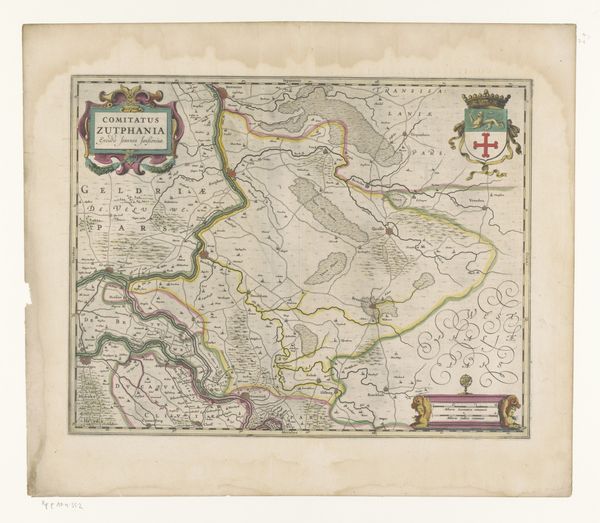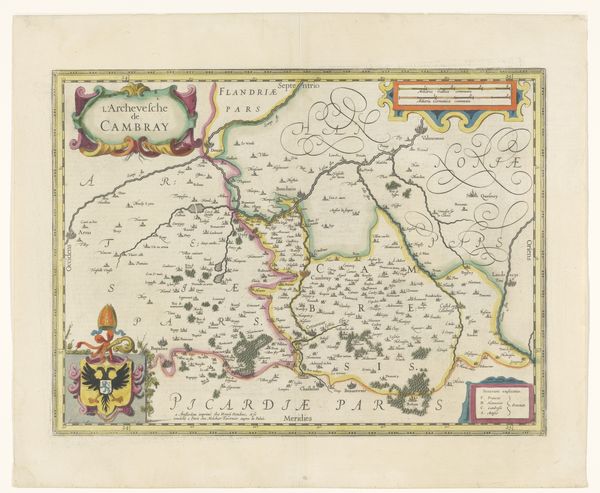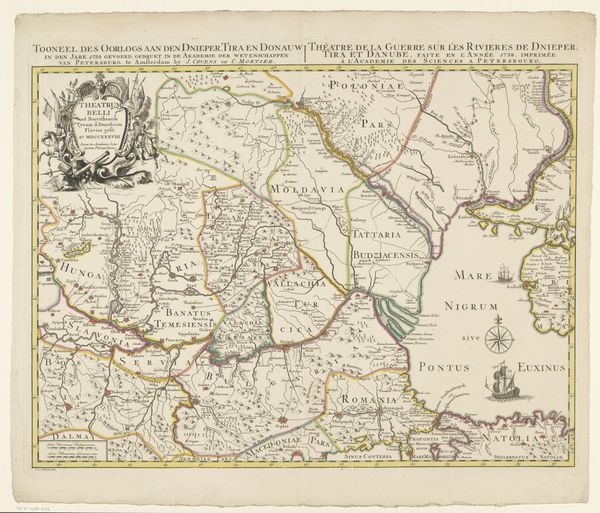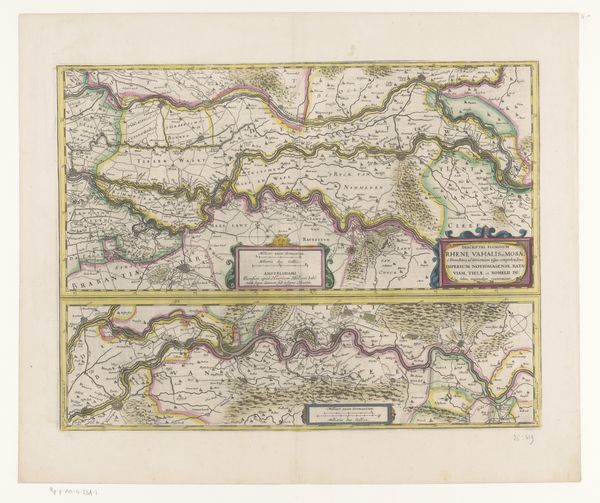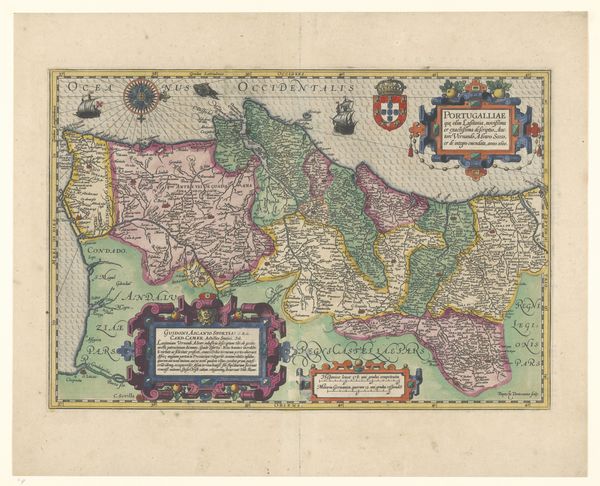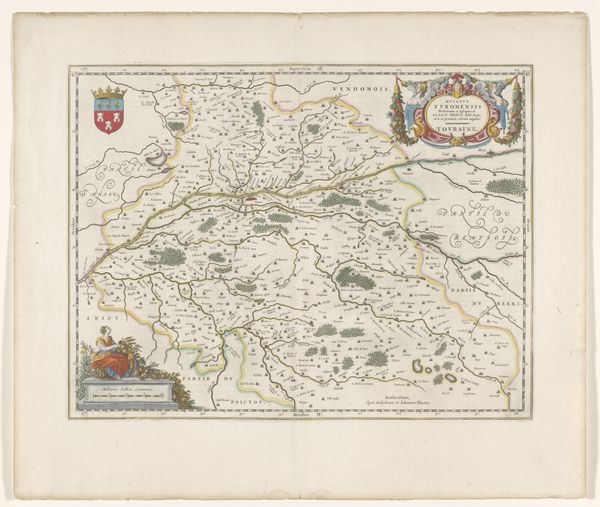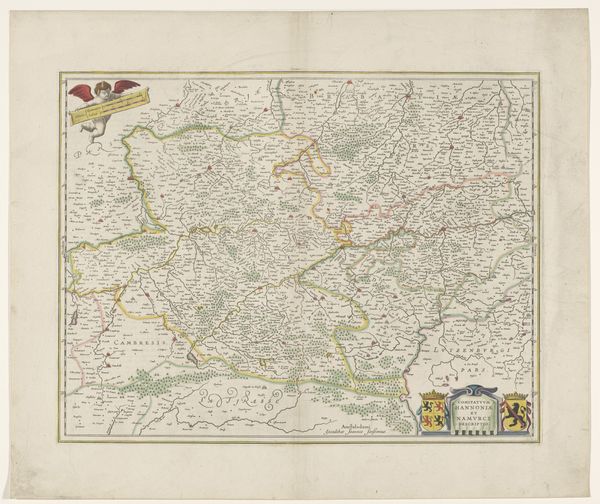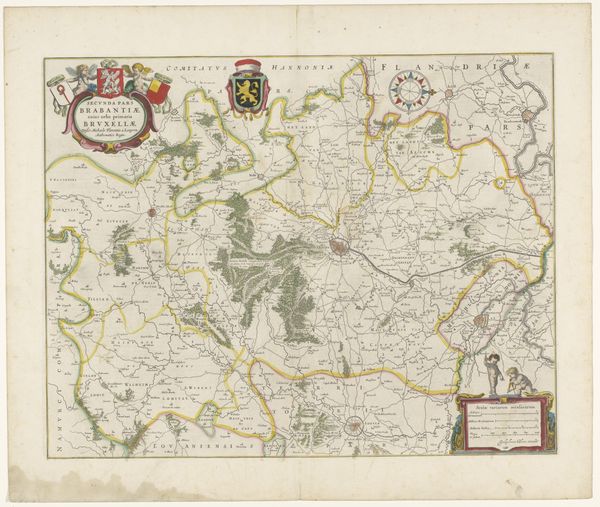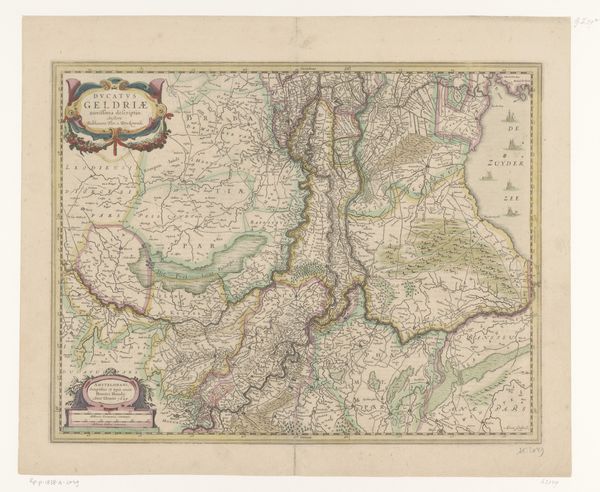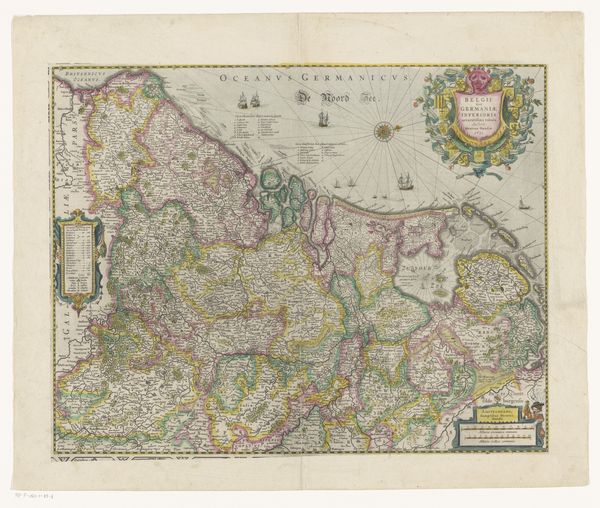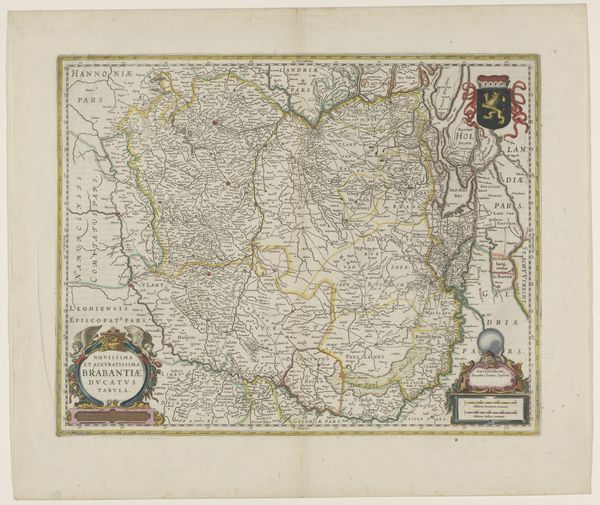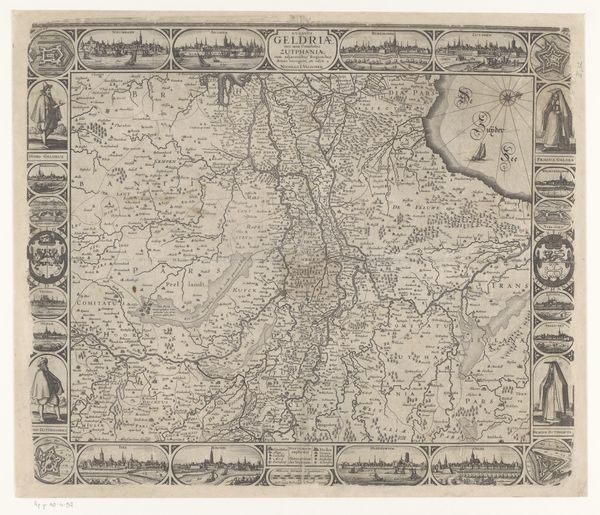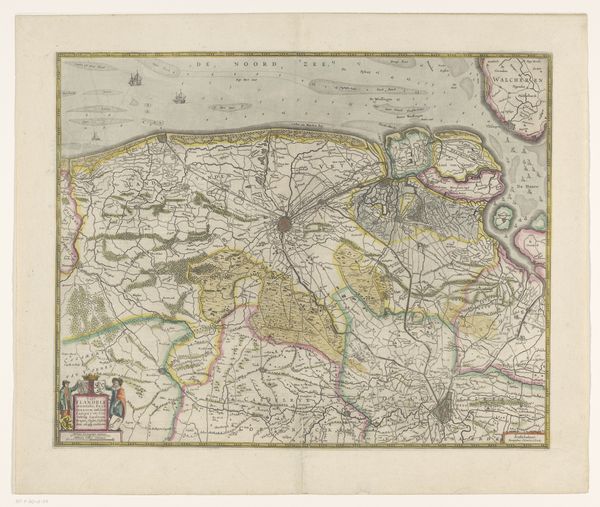
drawing, print, etching
#
drawing
#
map drawing
#
baroque
# print
#
etching
#
landscape
#
genre-painting
#
academic-art
Dimensions: height 415 mm, width 525 mm
Copyright: Rijks Museum: Open Domain
Curator: Let's examine this fascinating map drawing titled "Kaart van een deel van Vlaanderen," dating from 1647 to 1664. The artwork is a captivating example of early cartography. Editor: My initial impression is that this feels surprisingly modern, in the way the lines trace paths and borders. However, I must confess that the inclusion of Baroque elements in the ornate cartouches strikes me as rather whimsical for a utilitarian object. Curator: Indeed! Its charm rests in the interplay between the geometrically precise lines defining the land and the flourishes in the presentation. It’s intriguing how it mixes empirical data with cultural expression. Note the delicate etching work creating varying line weights. Editor: Precisely. The very act of creating such maps signified territorial dominion and resource management of a particular region. Also consider the placement of coats of arms and cherubic figures as demonstrations of wealth, legacy and political power. The purpose isn't solely informational; it reinforces a worldview. Curator: True, but examine the balance achieved through the placement of these elements; they almost function as a system of weights in composition, don't they? Consider the weight created by the cartouche. Editor: In considering audience, one would wonder how such elaborate artistic devices affected map comprehension. Curator: It possibly facilitated it! These motifs could make these documents more palatable to a noble elite unfamiliar with reading plans, as well as conveying power dynamics to laymen. Editor: On close inspection, the landscapes depicted are quite barren of any visible inhabitants. Considering that art of the time emphasized moral lessons and civic ideals through visual rhetoric, I wonder what message these "empty" landscapes sought to project. Curator: Perhaps to highlight an imagined ideal, ready to be utilized by an efficient, effective administrative authority. Its omissions speak volumes about the goals and world visions embedded within. The contrast with more peopled landscapes becomes highly informative. Editor: Studying this artwork encourages us to interrogate art's social roles beyond aesthetics. Curator: Precisely, and a careful study of lines and structure allows us to decode these underlying cultural frameworks with renewed precision.
Comments
No comments
Be the first to comment and join the conversation on the ultimate creative platform.
